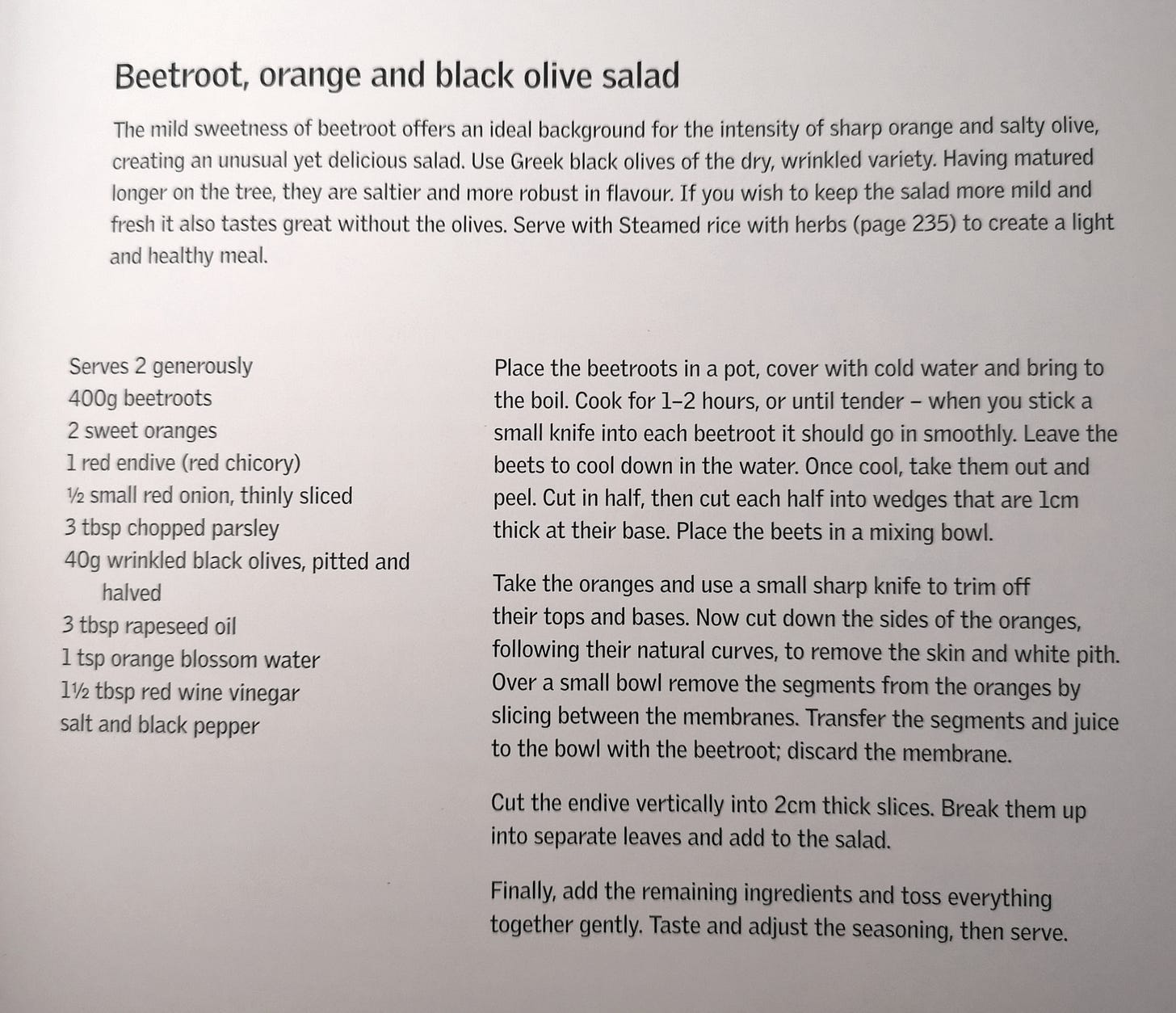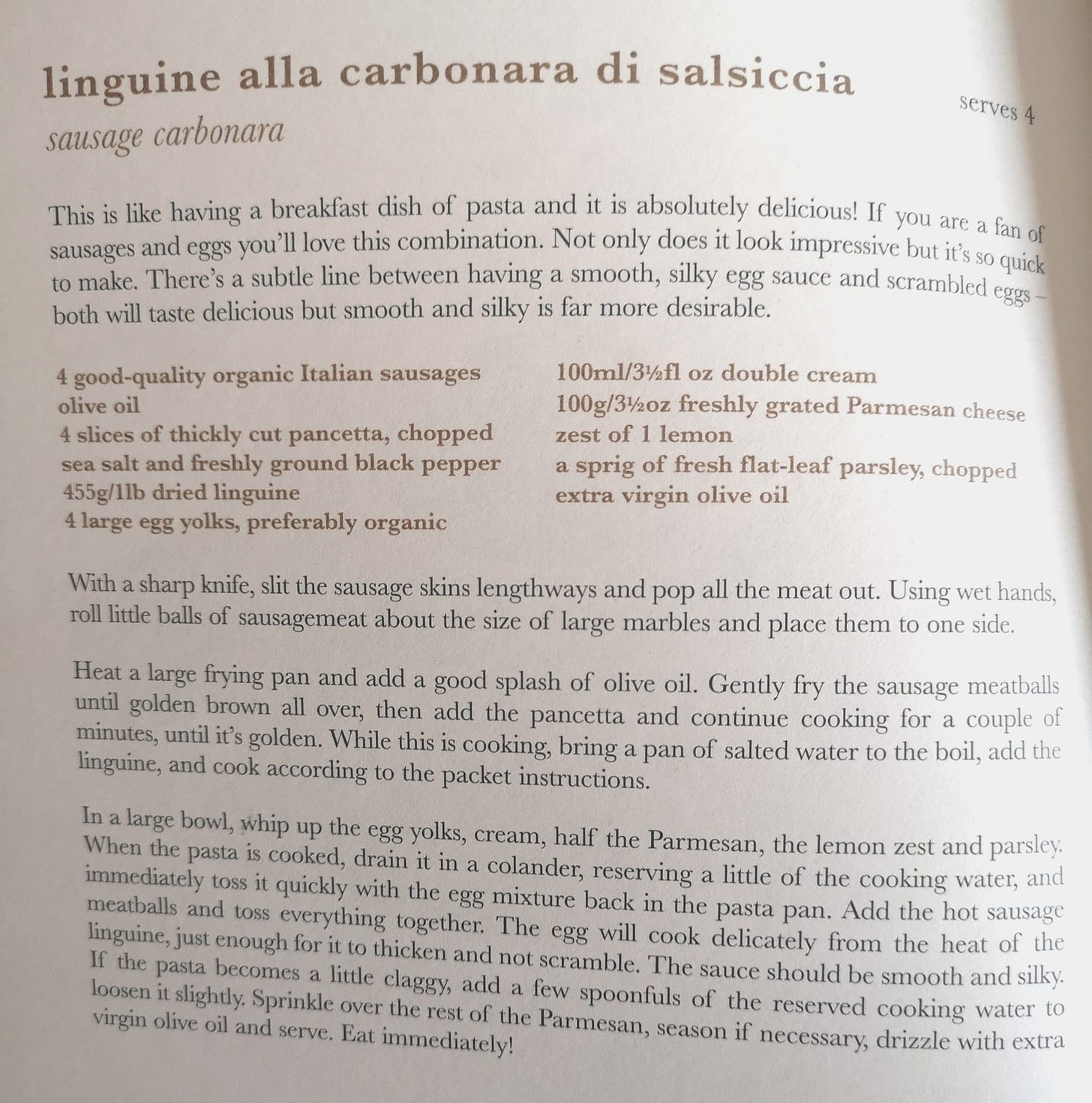Principles to Help You Think like a Chef, Reduce Food Waste and Make Your Cooking as Simple (But Delicious) as Possible
Whatever your dietary restrictions and food preferences
One of The Capsule Pantry’s aims is to teach you how to think like a chef. That means being able to make something out of just what’s in your fridge or pantry thus reducing waste and buying random ingredients for dishes you make just once.
Much of thinking like a chef starts with knowing some basic principles about cooking and creativity.
Today, we’re focusing on these rules and putting some into practice with some example recipes. Learn these and you should be able to look at almost any recipe and make it yours.
Ingredients aren’t just about flavor. They’re about structure
This is rule numero uno - if understand what an ingredient brings to a dish, you can make a successful substitution.
For instance:
Nuts on a salad isn’t just about a nutty flavour, it’s also about texture. Thus you can swap them out for something else like seeds or even toasted breadcrumbs.
Lemon in a dressing isn’t just about lemony flavour, it’s about acid. You can swap it for another source of acid like lime, vinegar or white wine.
Carrots aren’t just carrots, they’re root veg. In many instances, you could swap them out for parsnips or beetroot.
Cottage cheese on a jacket potato isn’t just cheese, it’s lactic-like freshness. You could mix in diced mozzarella into crème fraîche or soured cream and get largely the same effect.
Food is about balance. You want a substitution to bring the same structure - like acid, texture, sweetness or bitterness - to a dish.
Think about what an ingredient adds to a recipe and you can likely find something in your fridge or pantry that will sub in just fine.
Upgrade for $5 or $50 a year to gain access to weekly Capsule Pantry recipes, kitchen tips and hacks and the full TCP recipe archives
See foods as groups, not stand-alone ingredients
If I see a recipe I like the look of, I’ll take note of the ingredients and go to my mental rolodex of grouped ingredients and see what I can swap out.
Here are some examples of groups:
Categorizing herbs
Categorize herbs in terms of freshness.
If a recipe calls for cilantro, I might swap it for parsley. Both are highly aromatic and fresh.
But if it calls for rosemary, I’d swap it out for another woody herb like sage or thyme because they are more similar.
Dried herbs change a dish entirely so I would only use them if I’m not looking for that fresh hit of herbs. Otherwise, I might omit them entirely.
Dairy
Many dairy ingredients can be grouped together. For instance, if a recipe calls for a yogurt dressing but you only have a bit of crème fraîche left in the fridge, you could use this. Crème fraîche can also be a great substitution for soured cream (and vice versa).
Cheeses
I group cheese into hard, fresh, and fancy.
Hard includes cheddar, parmesan, manchego, and pecorino.
Fresh includes mozzarella, feta, queso fresco, and ricotta.
Fancy cheeses don’t often make it into my fridge unless I have company and want to offer a cheese board.
Most of the time, you can swap any hard for hard, and any soft for soft, which means fewer trips to the supermarket when a recipe calls for feta but you only have mozzarella.
Acid levels
Swap acid level for a similar acid level. For instance, you could swap a lemon for a lime, but I might not swap it for an orange because oranges contain less perceivable acid.
Acids can be grouped further into sharp and soft acids. An example of sharp acids might be wine vinegar or apple cider vinegar. Soft acids are more like sherry vinegar or balsamic vinegar.
Knowing this means you can balance a dish accordingly. For instance, if you’re making something quite fresh and light - let’s say a summer salad - you might want that fresher acid. If you’re dressing roasted root vegetables, a softer acid would work better with the deeper flavors.
Spices
Spices are some of the most important ingredients in your pantry. If you know how to group them, you know how to substitute them.
For instance:
Indian spices include coriander seed, cumin, turmeric, or mustard seeds.
Middle Eastern spices include blends of aromatic spices including Ras al Hanout or Za’atar.
Warming or aromatic spices include cloves, cardamom, ground ginger, cinnamon, fennel seeds.
If you’re making a curry, you could experiment with a mix of those Indian spices.
If you’re making Middle Eastern food, could you swap ras al hanout for a mix of aromatic spices such as cumin, fennel seed, or coriander seeds.
Swap out like for like and you can stop buying random spices for one dish never to be used again.
Pulses
Most pulses can be swapped out for similar.
For instance, a bean stew can often be made with chickpeas just as well as chickpeas.
Lentils can make a fine substitute for many beans.
Swapping cannellini for butter beans isn’t going to take much away from a dish.
Some ingredients are more flexible than others. Start with them
Every ingredient on The Capsule Pantry ingredient list has been chosen for a reason - they are super flexible.
Much like a capsule wardrobe it’s all about having a pantry where the ingredients largely work together, not against each other. You can start with the Capsule Pantry list but with the above rules, you can substitute for your own dietary requirements or preferences.
Use your freezer
If you’re committed to food waste, your freezer is your best friend.
When I’m not nomading around Europe, my freezer normally includes some ground beef, portions of roast chicken, homemade stock (each portion frozen flat in sealable and reusable sandwich bags), frozen peas (amazingly versatile), sweetcorn, and broad beans as well as batched homemade tomato sauce made from in-season tomatoes.
The only issue with using a freezer is that you can forget what’s in there. Who hasn’t had a barely recognizable piece of…something…languishing in the back of theirs for the past two years?
You could keep a list of what’s in there, but it can easily get out of date. Instead, I recommend only freezing food you know have a use for.
By all means, freeze the leftover curry from the other night, but only if you commit to a date when you’re going to eat it. Yes freeze the vegetable peelings you plan to make stock from, but only if you know when you’re going to make that stock.
Freezers aren’t where food goes to die, it’s where it goes for a little haitus.
Pre-packaged food is the most inflexible foodstuff of all
My heart sinks a little bit whenever I come across a fridge or freezer stuffed with pre-packaged food. Yes, they’re convenient and I’m all for that. But when it comes to flexibility, they don’t work.
Say you’ve got a pack of frozen french fries, burgers, and peas in the freezer, there really is only one dinner you can make from that. Whereas with potatoes and ground beef you can cook myriad dishes.
I’ve noticed that whenever I stay with someone with an overstuffed freezer of packaged goods, they always claim they’ve got nothing in the house so they go to the store to buy more.
What they really mean is that they don’t fancy the packaged stuff. Less of that could mean fewer spontaneous trips to the supermarket.
By all means, have some prepackaged foods in the freezer. A chicken Kiev and french fry dinner can be glorious. But if you want to reduce your food waste, keep it to a minimum.
Putting these rules into practice
This is how these rules look in real life.
Here’s a recipe from the wonderful Yotam Ottolenghi for a beetroot and orange salad:
This is how to sub:
The beetroots are an earthy root vegetable. You could swap it out for another root veg like carrots (don’t forget to cook for less time than a whole beetroot!)
The oranges are to counter the earthiness of the beetroot but carrots are sweeter, so you might not need that orange. Or you could keep the oranges - a lovely combination - but you could balance that sweetness with a sprinkling of something acidic like feta cheese or by adding extra vinegar to the dressing.
The endive adds bitterness so you could swap that for bitter greens like spinach, kale or broccoli rabe. Or if you don’t love a bitter edge, you could leave it out.
The parsley is a fresh herb so it could be subbed with a similar herb such as cilantro. It’s also quite subtle so you could omit it if you don’t have any.
The olives add saltiness which can be found in green as well as black olives if that’s what you have. Or do as Ottolenghi suggests and leave them out.
With regards to the dressing, I would simplify it to oil (rapeseed or olive would work great) and an acid like sherry vinegar or lemon juice.
How about this Italian dish from Jamie Oliver:
The sausages and pancetta meatballs are adding protein. They could be swapped for slices of bacon or little beef meatballs. If I wanted to make this dish vegetarian, I’d go a different route entirely and fry up some greens like kale or sprouting broccoli.
The linguine could be subbed for any other type of pasta you have to hand.
The egg yolks and double cream are like a bastardized carbonara sauce. They’re quite rich and I like more freshness so I would take out the egg yolks and cream entirely and swap with crème fraîche loosened at the end with pasta water. If I only had eggs, I would just use them and again, loosen up with pasta water, like a proper carbonara. But honestly, egg-thickened pastas are hard to execute properly. Save the bother and use crème fraîche or similar.
If I wanted to go vegan, I’d look for an alternative source of crème fraîche to use instead.
The parmesan cheese can be subbed for another hard cheese like pecorino.
I’d leave out the parsley entirely if I didn’t have it.
The lemon zest is adding freshness but I honestly wouldn’t sub this with anything - especially if I had freshened up the dish with crème fraîche or similar. I’d either use lemon if I had it, or omit it.
So there you have it. A peek into the principles I use to make variations and substitutions to every single Capsule Pantry recipe I develop. Principles you can use to make your own substitutions to almost any recipe you like.
There’s a lot to unpack here so if you’ve got any questions, feel free to stick them in the comments.






